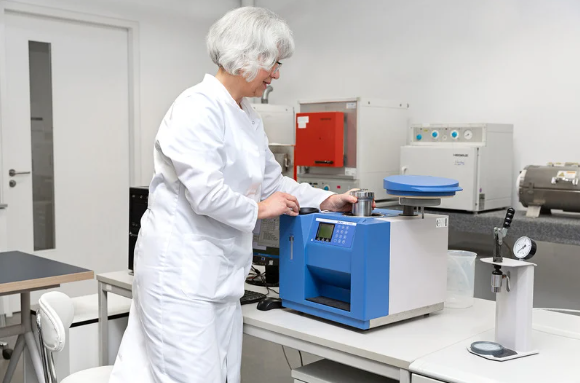Chemical Analytics
In today’s dynamic industrial landscape, the demand for precise analytical solutions has surged, driven by the need for reliable data to inform decision-making and optimize processes. At Wolfram Chemie Laboratories, we recognize the pivotal role analytical services play in advancing research, development, and manufacturing. Our commitment extends beyond delivering data – we empower businesses to overcome challenges and enhance their material and process development strategies.
Wolfram Chemie GmbH’s Laboratories specialize in providing comprehensive analytical services to meet the evolving needs of industries. Our analytical competence ensures the accurate measurement and determination of the physical, chemical, and mechanical properties of materials. By offering flexible, quick, and cost-efficient solutions, we assist clients in various domains, from product processing, chemical analysis and laboratory-scale experiments to R&D projects.
Our services encompass the selection of appropriate analytical methods, material characterization, and the meticulous evaluation and interpretation of results. With our highly trained team and innovative analytical techniques, we can support your research on new applications and product development.

Our Services
For the analysis of materials and experimental processing we are using various methods and systems in the areas of microscopy, spectroscopy, thermal treatment and analyses as well as wet-chemical analytics.
Why Choose Us
Customized solutions
We understand that each business has unique sustainability challenges, which is why we offer customized solutions tailored to your specific needs and goals.
Convenience & efficiency
With our in-house R&D team and laboratories, our services are designed to be efficient and convenient, allowing you to focus on running your business.
Industry recognition
Our services are based on internationally recognized standards and guidelines, such as ISO and GHG Protocol, ensuring that your sustainability performance is credible and can be compared with others in your industry.
knowledge & expertise
Our team at Wolfram Chemie has years of experience in providing sustainability services, giving you the peace of mind that comes from working with seasoned professionals.
Contact

Adriana Bernal
Chemical analytics
+49 30 99 21 18 210
Feel free to use the contact form or write us at contact@wolfram-chemie.com and we will get back to you as soon as possible.
